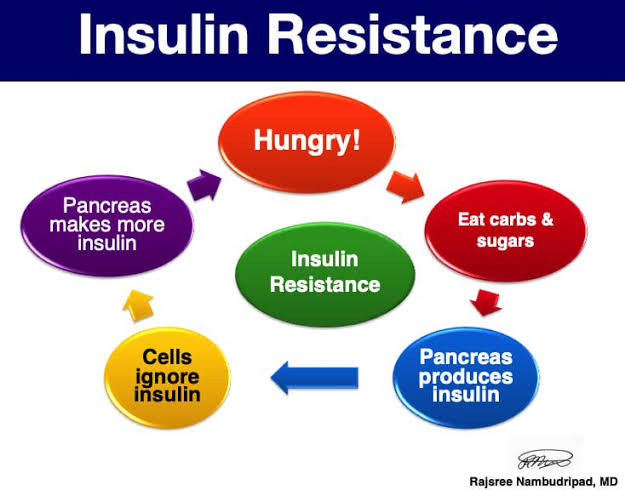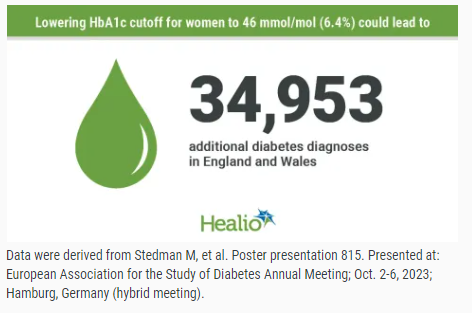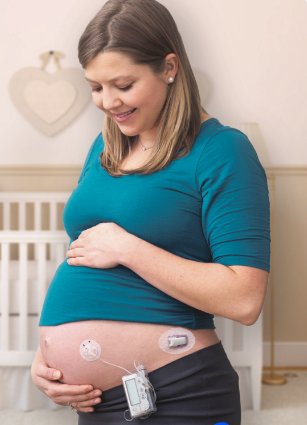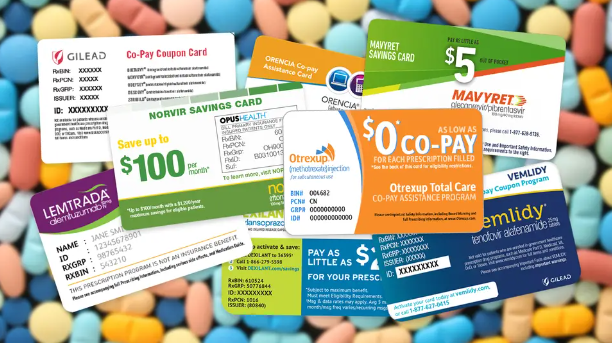What Is Insulin Resistance and How Do You Know if You Have It? by Knvul Sheikh for NYTimes.com, 3 October 2023.
 Insulin is a hormone secreted by the pancreas that is crucial for converting food into energy, or storing that energy for later. When your blood glucose levels rise after a meal, the pancreas responds by producing insulin. The insulin, in turn, helps cells use the sugar and brings the amount of glucose in your bloodstream back to a normal range.
Insulin is a hormone secreted by the pancreas that is crucial for converting food into energy, or storing that energy for later. When your blood glucose levels rise after a meal, the pancreas responds by producing insulin. The insulin, in turn, helps cells use the sugar and brings the amount of glucose in your bloodstream back to a normal range.
When you are insulin resistant, your body does not respond to insulin after meals as effectively as it should. This means your cells don’t take in enough glucose. The pancreas then produces more insulin to help the process along. Eventually, the pancreas becomes unable to keep up. “After a number of years, your blood sugar starts to stay high after you eat and that ultimately leads to what we call pre-diabetes,” said Dr. Ruchi Mathur, an endocrinologist at Cedars-Sinai in Los Angeles.
According to the Centers for Disease Control and Prevention, 37.3 million adults have diabetes, and 96 million — or more than one-third of Americans — have pre-diabetes. Because insulin resistance is a precursor to both, researchers estimate the number of people with insulin resistance is much higher. “Most people don’t even know that they have it,” said Dr. Mary Vouyiouklis Kellis, an endocrinologist at Cleveland Clinic. People develop insulin resistance as the result of a mix of social and biological factors, Dr. Kellis said.
Data suggests that insulin resistance also increases with age, as pancreatic function declines. It is also more likely to occur in people who are less physically active or have a poor diet. Certain medications temporarily increase the risk of insulin resistance, including a class of steroids called glucocorticoids, some antipsychotics and some H.I.V. medicines, Dr. Kellis said. Some metabolic or hormonal diseases are associated with insulin resistance as well, including high blood pressure, heart disease, nonalcoholic fatty liver disease and polycystic ovary syndrome, or PCOS.
Read more: What Is Insulin Resistance and How Do You Know if You Have It?
FDA Updates Ozempic Label With Warning for Intestinal Blockages by Anna Brooks for diaTribe.org, 2 October 2023.
 After multiple reports of intestinal blockages following Ozempic use, the US Food and Drug Administration (FDA) has added a new warning to the drug’s label. Known medically as ileus (blocked intestines), this gastrointestinal problem occurs when the intestines can’t properly contract and move waste through the body. Roughly 20 cases of ileus – including two deaths – have been reported after Ozempic use. Ileus is typically a result of abdominal surgery, but can also be caused by inflammation, injuries, and certain medications. Signs of an intestinal blockage include bloating, abdominal cramps, constipation, nausea, and vomiting.
After multiple reports of intestinal blockages following Ozempic use, the US Food and Drug Administration (FDA) has added a new warning to the drug’s label. Known medically as ileus (blocked intestines), this gastrointestinal problem occurs when the intestines can’t properly contract and move waste through the body. Roughly 20 cases of ileus – including two deaths – have been reported after Ozempic use. Ileus is typically a result of abdominal surgery, but can also be caused by inflammation, injuries, and certain medications. Signs of an intestinal blockage include bloating, abdominal cramps, constipation, nausea, and vomiting.
While a warning has been added to Ozempic’s drug label, the FDA hasn’t cited a direct link between semaglutide and ileus – a rare, but serious side effect. There have also been reports of stomach paralysis, a condition known as gastroparesis (delayed stomach emptying), potentially related to Ozempic, though these claims have yet to be substantiated. Ozempic works by reducing appetite and slowing down how fast the stomach empties. While a link between Ozempic and stomach paralysis has not been established yet, GLP-1s are not recommended for people who already have gastroparesis.
Read more: FDA Updates Ozempic Label With Warning for Intestinal Blockages
Corporate Executive Changes in the Diabetes Marketplace
- Insulet CFO Wayde McMillan to step down:
 Insulet said Wayde McMillan has decided to step down from his role as Executive Vice President, Chief Financial Officer and Treasurer, effective October 20. McMillan will join 3M as CFO of its Health Care business. Lauren Budden, Group Vice President, Chief Accounting Officer and Controller, will assume the additional responsibilities of interim CFO and Treasurer. Read more: Insulet CFO Wayde McMillan to step down
Insulet said Wayde McMillan has decided to step down from his role as Executive Vice President, Chief Financial Officer and Treasurer, effective October 20. McMillan will join 3M as CFO of its Health Care business. Lauren Budden, Group Vice President, Chief Accounting Officer and Controller, will assume the additional responsibilities of interim CFO and Treasurer. Read more: Insulet CFO Wayde McMillan to step down
- Eli Lilly announces leadership changes in diabetes and obesity unit:
 Eli Lilly that Mike Mason, executive vice president and president of its diabetes and obesity division, will retire at the end of 2023 after 34 years of service with the company. Patrik Jonsson, executive vice president and head of Lilly’s immunology and U.S. units, will succeed Mason, effective January 1, 2024. Mason’s departure comes as the Indiana-based pharma giant awaits a potential FDA label expansion for its diabetes therapy Mounjaro for a weight loss indication before year-end. Read more: Eli Lilly announces leadership changes in diabetes and obesity unit
Eli Lilly that Mike Mason, executive vice president and president of its diabetes and obesity division, will retire at the end of 2023 after 34 years of service with the company. Patrik Jonsson, executive vice president and head of Lilly’s immunology and U.S. units, will succeed Mason, effective January 1, 2024. Mason’s departure comes as the Indiana-based pharma giant awaits a potential FDA label expansion for its diabetes therapy Mounjaro for a weight loss indication before year-end. Read more: Eli Lilly announces leadership changes in diabetes and obesity unit
HbA1c cutoff for diagnosing diabetes likely too high for premenopausal women by Michael Monostra for Healio.com/endocrinology, 5 October 2023.
 The HbA1c cutoff for diagnosing women younger than 50 years with diabetes may need to be lower than the cutoff for men, according to study findings. The distribution of HbA1c levels among healthy adults younger than 50 years in England and Wales was 1.6 mmol/mol lower for women compared with men, researchers observed in data presented at the European Association for the Study of Diabetes annual meeting and simultaneously published in Diabetes Therapy.
The HbA1c cutoff for diagnosing women younger than 50 years with diabetes may need to be lower than the cutoff for men, according to study findings. The distribution of HbA1c levels among healthy adults younger than 50 years in England and Wales was 1.6 mmol/mol lower for women compared with men, researchers observed in data presented at the European Association for the Study of Diabetes annual meeting and simultaneously published in Diabetes Therapy.
“The threshold for diagnosis of diabetes mellitus may be too high by approximately 2 mmol/mol in women under the age of 50, which may result in 17% of all premenopausal women missing their diabetes mellitus diagnosis,” Adrian H. Heald, MD, consultant at Salford Royal Hospital in the U.K. and lecturer at the University of Manchester, and colleagues wrote.
Hybrid Closed-Loop Insulin System for T1D Safe, Effective During Pregnancy by Kristen Monaco for MedPageToday.com, 5 October 2023.
 A hybrid closed-loop insulin therapy system significantly improved glycemic control among pregnant women with type 1 diabetes, the randomized AiDAPT trial showed. Meeting the primary endpoint, the mean percentage of time that the maternal glucose level was in the target range was 68.2% with the hybrid closed-loop system and 55.6% with standard insulin therapy, reported Helen Murphy, MD, of the University of East Anglia in Norwich, England, during the European Association for the Study of Diabetes (EASD) annual meeting. This equated to an additional 2.5 hours per day spent in the pregnancy-specific target glucose range, the authors noted in the New England Journal of Medicine, where the study was simultaneously published.
A hybrid closed-loop insulin therapy system significantly improved glycemic control among pregnant women with type 1 diabetes, the randomized AiDAPT trial showed. Meeting the primary endpoint, the mean percentage of time that the maternal glucose level was in the target range was 68.2% with the hybrid closed-loop system and 55.6% with standard insulin therapy, reported Helen Murphy, MD, of the University of East Anglia in Norwich, England, during the European Association for the Study of Diabetes (EASD) annual meeting. This equated to an additional 2.5 hours per day spent in the pregnancy-specific target glucose range, the authors noted in the New England Journal of Medicine, where the study was simultaneously published.
“We would recommend that hybrid closed-loop from here on in should be offered to all pregnant women with type 1 diabetes, definitely during pregnancy and … ideally starting pre-pregnancy,” Murphy said. “Whether we use faster-acting insulins, whether we use pumps, and despite the massive improvements we’ve seen in clinical care that can be attributed to real-time [continuous glucose monitoring] — none of those things by themselves are enough to get enough women to target early enough in pregnancy.”
Read more: Hybrid Closed-Loop Insulin System for T1D Safe, Effective During Pregnancy
Court Strikes Down HHS Rule that Allowed Insurers to Not Count Copay Assistance by AccessWire for Yahoo.com/finance, 2 October 2023.
 In a major victory for patients who depend on prescription drugs, Judge John D. Bates of the U.S. District Court for the District of Columbia struck down a Trump administration federal rule that allowed health insurers to not count drug manufacturer copay assistance towards a beneficiary’s out-of-pocket costs.
In a major victory for patients who depend on prescription drugs, Judge John D. Bates of the U.S. District Court for the District of Columbia struck down a Trump administration federal rule that allowed health insurers to not count drug manufacturer copay assistance towards a beneficiary’s out-of-pocket costs.
By using “copay accumulators,” health insurers pocket copay assistance patients receive, rather than allowing it to assist patients in paying for their necessary medication. The 2021 Notice of Benefit and Payment Parameters rule, promulgated during the Trump administration, authorized these practices. In its decision, the Court struck that rule, recognizing that it is unlawful.
Insurers will now have to abide by the federal rule that governed 2020 health plans. Under that rule, copay accumulators are permissible only for branded drugs that have a generic equivalent, if allowed by state law. Now, insurers are precluded by federal regulation from implementing copay accumulators for drugs that lack generic equivalents.
Read more: Court Strikes Down HHS Rule that Allowed Insurers to Not Count Copay Assistance


The HHS was obviously incorrect with the accumulator card issue. I am thrilled it was overturned.
I know mike mason, he is a good guy !! I do not know Patrick.